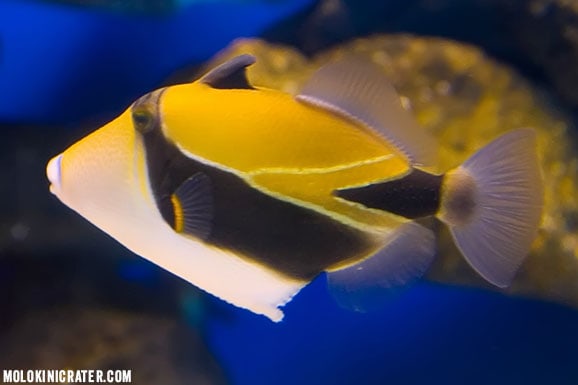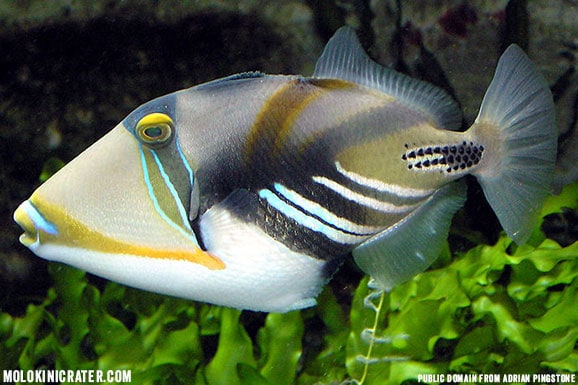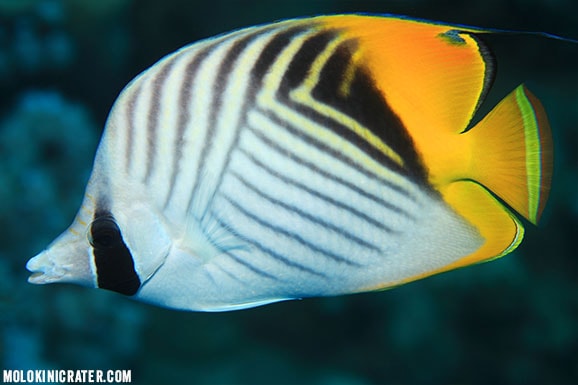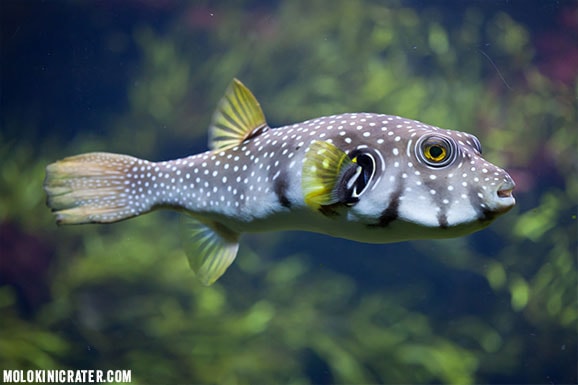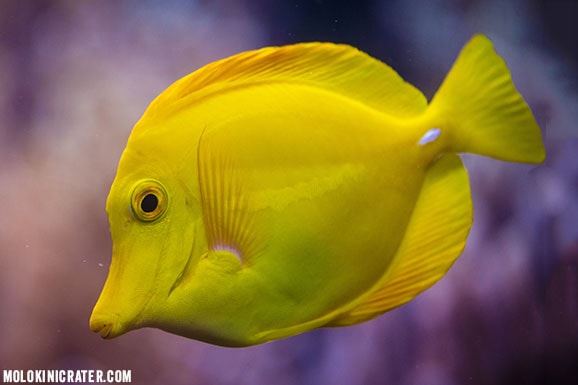Life at Molokini
Learn to identify common fish you’ll find at Molokini Crater as well as potential finds. Molokini is a bird sanctuary & a Marine Life Conservation District.
Fish, Birds, Whales & more!
Molokini Marine Life Conservation District
In 1977, after a long and turbulent history, the islet of Molokini and the 77 acres surrounding it (including all underwater terrain) were declared a Marine Life Conservation District. The reef, birds, fish, and all marine life are now protected from fishing, collection, and any further destructive human behavior.
Eco-tourism at Molokini has raised a level of controversy due to the amount of snorkeling & diving done in the area. In an attempt to slow use of Molokini, tour boats have been allocated specific moorings in order to protect the reef from anchors and to restrict the area to only a specific number of boats.
Learn more about common Maui fish.
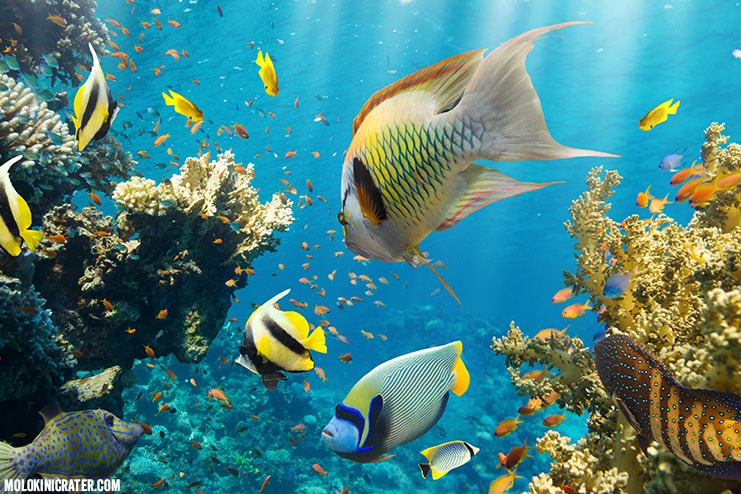
Bird Sanctuary
Molokini is federally owned and protected as a Hawaii State Seabird Sanctuary. On and within the rocky terrain of the island atoll, you can find nesting seabirds.
The Wedge-Tailed Shearwater is a large shearwater with thin beak primarily feeding on fish (mainly Goatfish) as well as crustaceans. Though thought to primarily feed on the surface, recent studies show that they can reach a depth of 216 ft (66m).
The Bulwer’s Petrel is a small petrel with a rather long wingspan and pointed tail. It feeds off of planktonic creatures on the ocean surface. They’re found to breed on north Pacific islands, China & Hawaii, after which the Bulwer spends most of the year at sea.
Learn more about Maui bird watching.
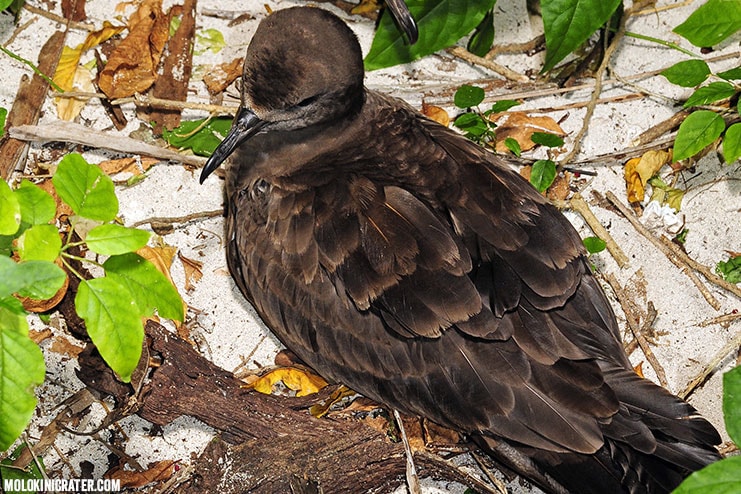
Humpback Whales
Though Humpback Whales are not known to enter the shallow waters of Molokini Crater, they are abundant all around Molokini during whale season. Every year, Humpback whales migrate from their summer home in the Pacific North West back to Hawaii. They come to Hawaii (Maui in particular) in order to mate and give birth to Humpback calves. The warm, shallow water between Maui, Molokini, Kahoʻolawe, Lanaʻi, and Molokai is a perfect sanctuary at the end of a long journey.
The surface behavior of our Humpbacks is truly awe-inspiring. As they compete for the affection of females, male Humpbacks display all kinds of surface activity as they battle with other males. They also sing complex songs that can reach other whales many miles away. When snorkeling or scuba diving, you’ll likely hear them singing, during season.

Potential Finds
Reef Sharks

White Tipped Reef Sharks are plentiful and harmless to humans if unprovoked.
Ornate Octopus
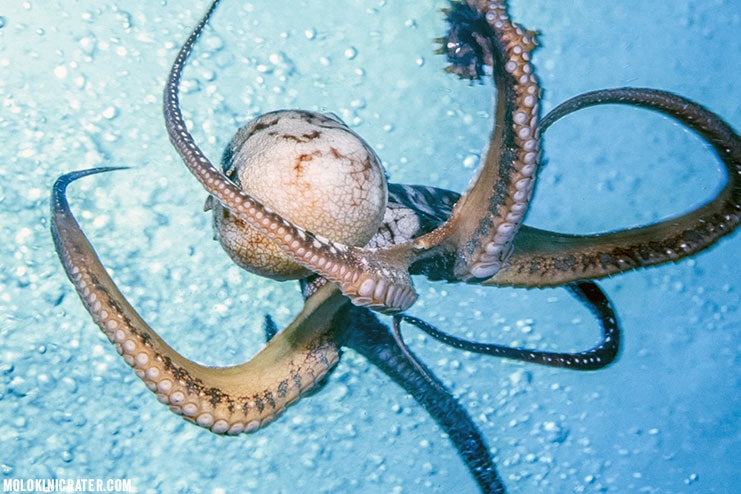
Tropical species of octopus also known as white-striped octopus.
Manta Rays
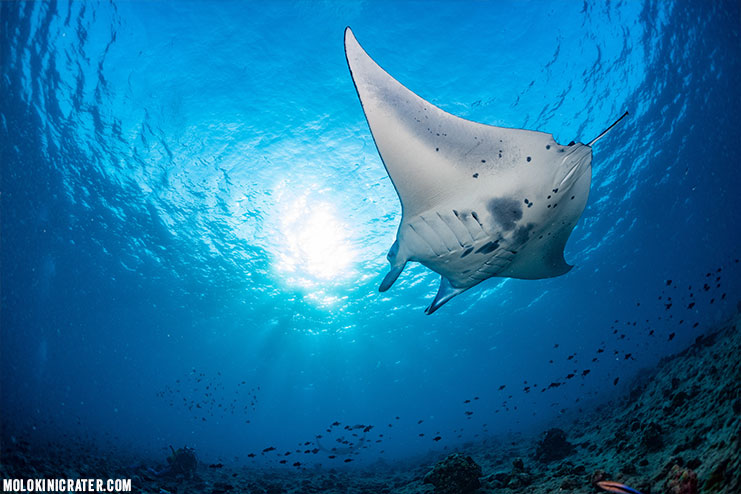
Manta birostris is the largest species of rays in the Myliobatidae family.
Moray Eels

Though they blend well with the reef, there are many eels hiding.
Common Fish at Molokini Crater
What kind of fish can I expect to find at Molokini Crater?
We’ve listed a few of the most common fish you may encounter.



